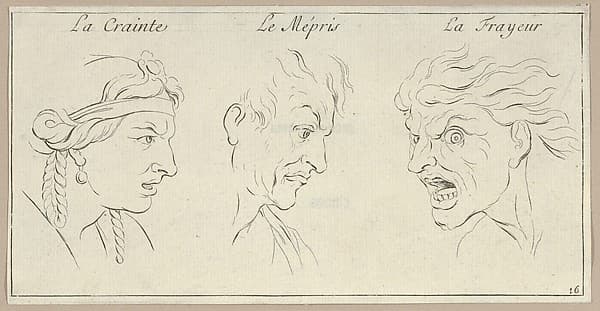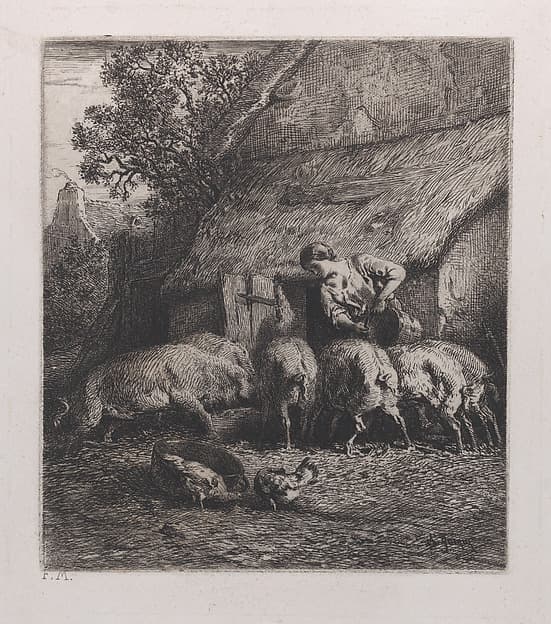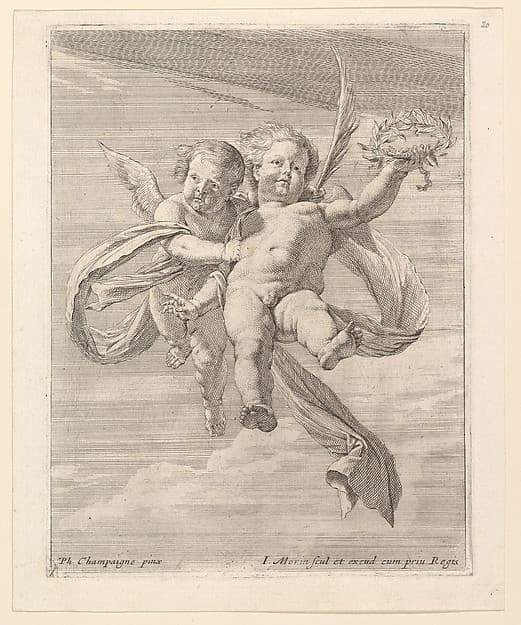
Related Artworks
Discover similar artworks
The Revenge of Nauplios, after Rosso Fiorentino
ca. 1625–46

The School Master
ca. 1638

Le Crainte, Le Mépris, La Frayeur (from Caractères des passions, gravés sur les desseins de l'illustre Monsieur le Brun)
1695–1720

Copy of Capitano Spessa Monti and Bagattino, from "Balli di Sfessania" (Dance of Sfessania)
after 1622

Woman Feeding Pigs
1850

The Nativity
ca. 1544–48

Fragments choisis dans les Peintures et les Tableaux les plus interessants des Palais et des Eglises d'Italie
18th century

Groupe de deux angelots (l'un regardant de face et l'autre vers la gauche)

Un Gentilhomme et son Page (A Gentleman and his Page), from Les Caprices Series A, The Florence Set
1617

Euterpe, from "Twelve Muses and Goddesses"
ca. 1540–45

6th Plate, Featuring 10 Coins Issued by European Princes in the 16th and 17th centuries, from Les Monnaies (The Currencies)
ca. 1630

A gentleman seen from behind walking into a church
ca. 1629
More by Claude Gillot
Explore other works by this artist

Four Actors in Heroic Costume, with a Study of a Helmeted Head
ca. 1711–22

Design of a Flintlock, Side Plate, Butt Plate, and Trigger Guard, unnumbered plate from Nouveaux Desseins d'Arquebuserie Inventez et Gravez par Le Sr. Gillot
ca. 1715

Plate for The Fish and the Fireworks, Fable Sixteen, in Fables Nouvelles, Dediées au Roy
1719

The Education (L'Education): in a forest, to right an old satyr instructor holding a wand, teaching a group of children, to the left a merchant of orvietan trying to attract spectators with his act, from 'The lives of satyrs' (La vie des satyres)
ca. 1700–1720

Habit de Faune: a faun wearing a tonnelet with a flute attached, a cane in his right hand and vines around his horns, from 'New designs for costumes' (Nouveaux desseins d'habillements à l'usage des balets operas et comedies)
ca. 1721

Habit d'Ixion: a man wearing a tonnelet with a sword in the belt, a turban with one large feather on his head, from 'New designs for costumes' (Nouveaux desseins d'habillements à l'usage des balets operas et comedies)
ca. 1721

Habit de Roy: a man wearing a tonnelet decorated with rosettes, a crown and a turban with feathers on his head, from 'New designs for costumes' (Nouveaux desseins d'habillements à l'usage des balets operas et comedies)
ca. 1721

Plate 46: Habit de Folie: a woman in a ballet pose, wearing a bonnet and holding a marotte in her right hand, from 'New designs for costumes' (Nouveaux desseins d'habillements à l'usage des balets operas et comedies)
ca. 1721

The festival of Diana, interrupted by satyrs (Feste de Diane, troublée par des Satyres): nymphs gathered around the bust of Diana in a stone niche at center, surprised by the arrival of satyrs from either side, from 'Les Bacchanales; Quatres Festes'
ca. 1786

Witches' Sabbath, within a nocturnal landscape, a necromancer seated at top center wearing a robe and cap inscribed with Kabbalist symbols, below him to left a horse with the head of a beast, a ring of nude dancers to right, a robed with the head of a pig to left, various witches, sorcerers, strange animals, and monsters on the ground to left in the foreground, from 'The Sabbaths' (Les Sabbats)
ca. 1700–1720

The Birth (La Naissance): in a forest, the new mother resting in a hammock at center, the newborn below her to left, various satyrs and goats surrounding, from 'The lives of satyrs' (La vie des satyres)
ca. 1700–1720

The Marriage (Le Mariage): in a forest, an old satyr marries the betrothed in center, musicians to right, old satyrs with canes to the left, a couple consulting an old philosopher to left in the foreground, from 'The lives of satyrs' (La vie des satyres)
ca. 1700–1720